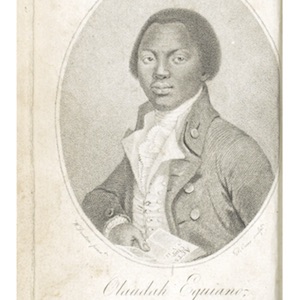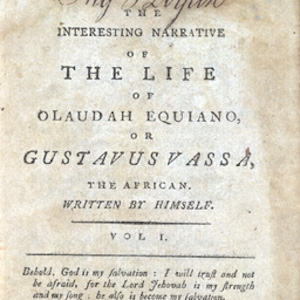Slavery

The Interesting Narrative of the Life of Olaudah Equiano: Kidnapping
From the 16th to the 18th centuries, an estimated 20 million Africans crossed the Atlantic to the Americas in the trans-Atlantic slave trade.

The Interesting Narrative of the Life of Olaudah Equiano: Slave Ship
From the 16th to the 18th centuries, an estimated 20 million Africans crossed the Atlantic to the Americas in the trans-Atlantic slave trade.

The Interesting Narrative of the Life of Olaudah Equiano: Middle Passage
From the 16th to the 18th centuries, an estimated 20 million Africans crossed the Atlantic to the Americas in the trans-Atlantic slave trade.

The Interesting Narrative of the Life of Olaudah Equiano: Slave Auction
From the 16th to the 18th centuries, an estimated 20 million Africans crossed the Atlantic to the Americas in the trans-Atlantic slave trade.

A Narrative of the Life and Adventures of Venture A Native of Africa
In this excerpted source, Venture Smith recalls his experiences in the slave trade as a child. This source is especially important, as Smith gives a very vivid account of slave raiding, a common practice that took place during the peak years of the slave trade in the 18th century.

Peter Kolb Travel Narrative 1
Peter Kolb was a German astronomer and mathematician who lived at the Cape from 1705 to 1713. He was initially sponsored by a German baron to make astronomical observations in pursuit of a way to calculate longitude accurately.

Children in the Slave Trade Table
The Trans-Atlantic Slave Trade: A Database on CD-ROM, edited by David Eltis, Stephen D. Behrendt, David Richardson, and Herbert S. Klein, contains the best quantitative evidence to date on the number of Africans sold into the slave trade.

Little Eva, The Flower of the South
Published around 1853, Little Eva, The Flower of the South is an anonymously written children's story based on Eva, the enormously popular character in Harriet Beecher Stowe's anti-slavery novel, Uncle Tom's Cabin (1852).

Captured Africans Liberated from a Slaving Vessel
The Graphic, a London periodical owned by liberal reformer William Luson Thomas, was not an abolitionist publication per se, but it did seek to inspire action against those causes that Thomas felt demanded immediate attention, such as poverty, crime, and slavery.

Slave Coffle, Central Africa, 1861
This image shows children and adults making their way from the African interior to the coast in a slave coffle. While some may think that children were given special treatment because of their age, and some may have, this image suggests that this was not always the case.